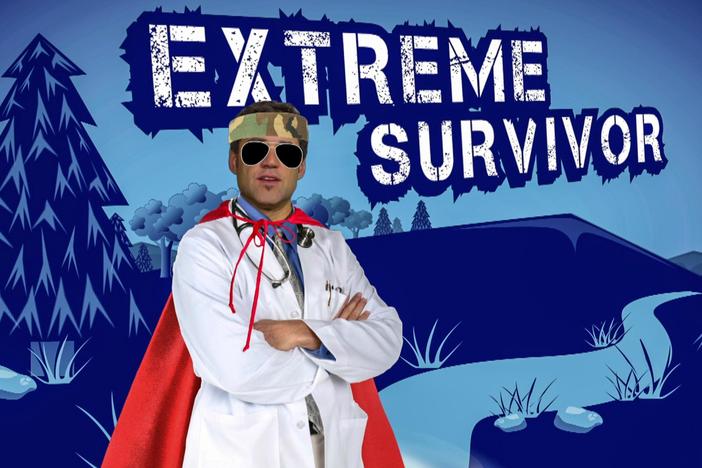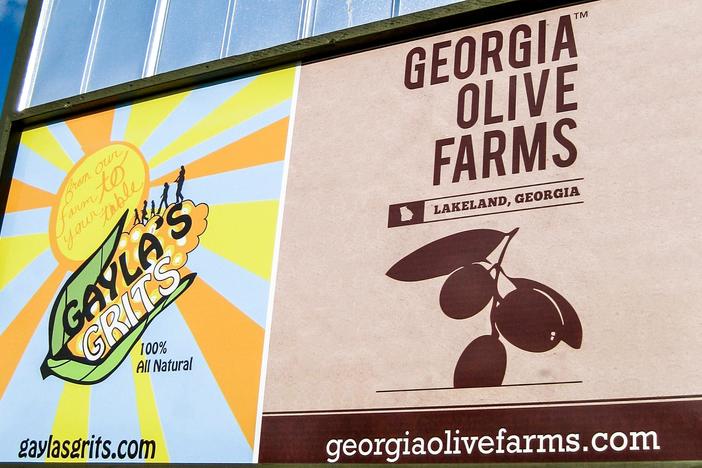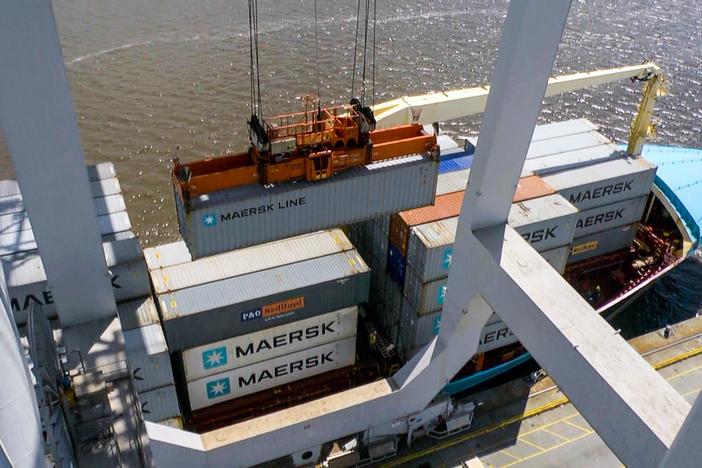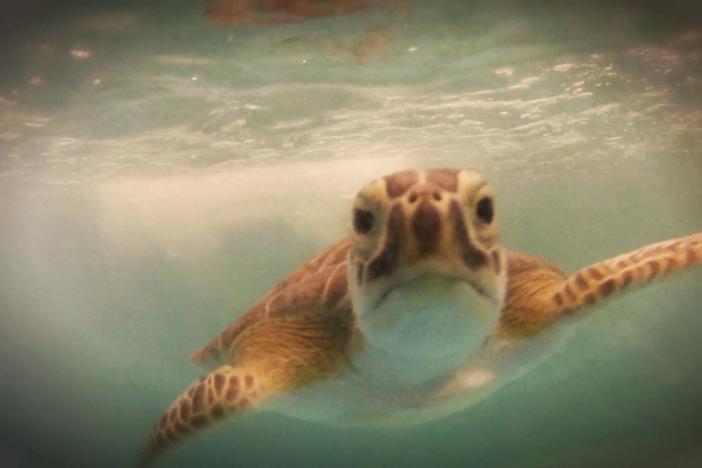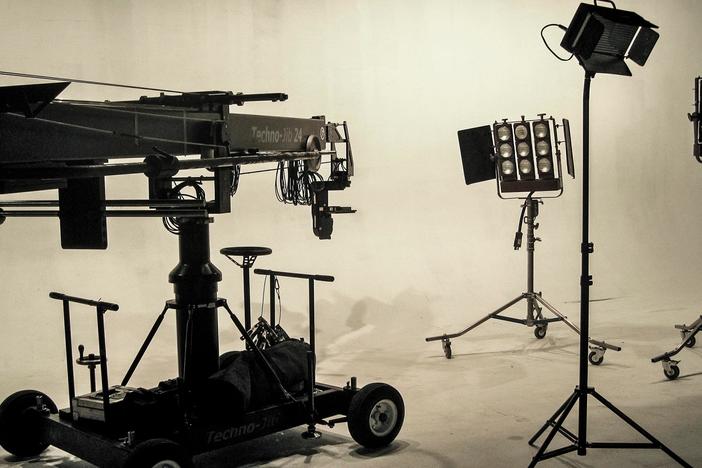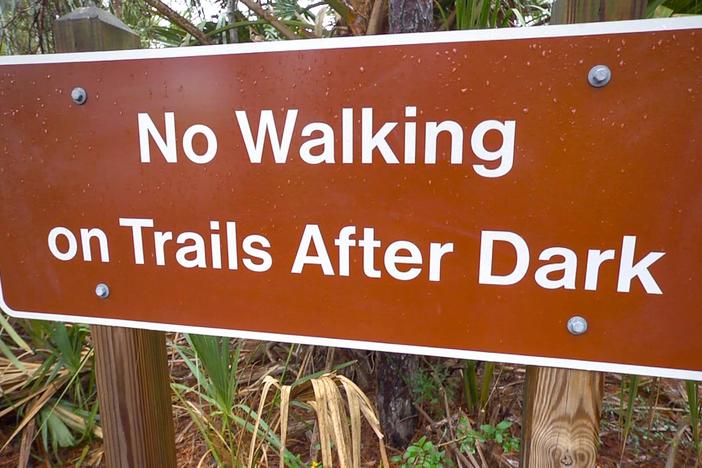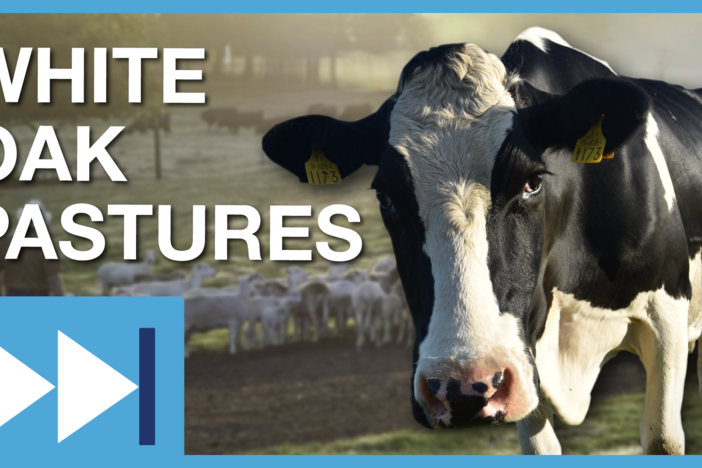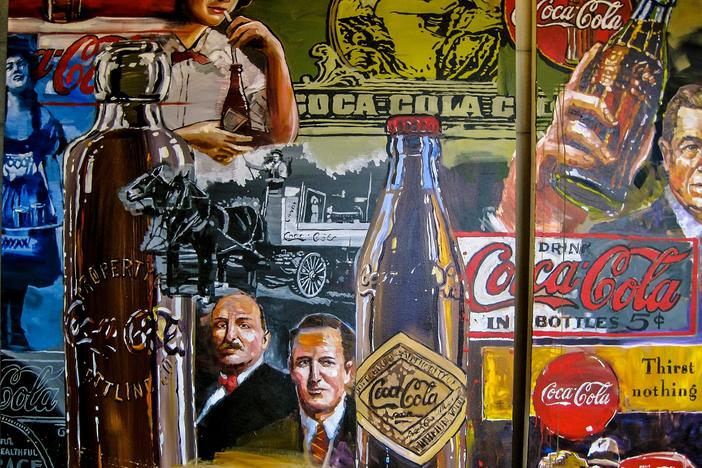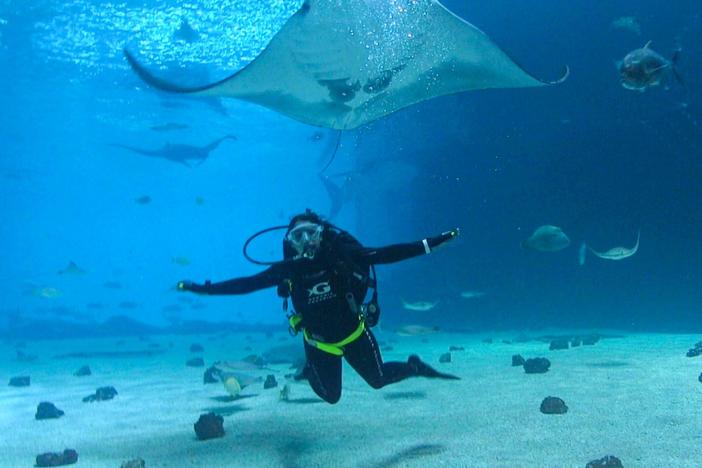Georgia Sea Turtle Center
All animals should have it as good as the patients at the Georgia Sea Turtle Center, where the staff is doing some richly rewarding work! The highlight of our visit is an up-close look at a surgical procedure on an injured sea turtle named Sendac. In addition, we take a guided tour, shoot behind the scenes, and interview the center's director, nursing staff, and more. Teachable Moments include a definition and explanation of ecosystems, and a description of why honey is a great substance for treating turtle wounds.
Georgia Sea Turtle Center
All animals should have it as good as the patients at the Georgia Sea Turtle Center, where the staff is doing some richly rewarding work! The highlight of our visit is an up-close look at a surgical procedure on an injured sea turtle named Sendac. In addition, we take a guided tour, shoot behind the scenes, and interview the center's director, nursing staff, and more. Teachable Moments include a definition and explanation of ecosystems, and a description of why honey is a great substance for treating turtle wounds.
Science
Ask questions to differentiate between plants, animals, and habitats found within Georgia's geographic regions.
Construct an explanation of how external features and adaptations (camouflage, hibernation, migration, mimicry) of animals allow them to survive in their habitat.
Use evidence to construct an explanation of why some organisms can thrive in one habitat and not in another.
Construct an explanation for the patterns of interactions observed in different ecosystems in terms of the relationships among and between organisms and abiotic components of the ecosystem.
Analyze and interpret data to provide evidence for how resource availability, disease, climate, and human activity affect individual organisms, populations, communities, and ecosystems.
Ask questions to gather and synthesize information from multiple sources to differentiate between Earth's major terrestrial biomes (i.e., tropical rain forest, savanna, temperate forest, desert, grassland, taiga, and tundra) and aquatic ecosystems (i.e., freshwater, estuaries, and marine).
Plan and carry out investigations and analyze data to support explanations about factors affecting biodiversity and populations in ecosystems.
Construct an argument to predict the impact of environmental change on the stability of an ecosystem.
Design a solution to reduce the impact of a human activity on the environment.
Construct explanations that predict an organism's ability to survive within changing environmental limits (e.g., temperature, pH, drought, fire).
1. Why do sea turtles have their own rehab center? Is there an injured squirrel or possum rehab center as well?
2. Why is it important to maintain a balanced ecosystem? Why would having too many sharks or too many jellyfish be bad for the ecosystem?
Conservation: the protection of animals, plants, and natural resources
Ecosystem: everything that exists in a particular environment
Antibiotic: a drug that is used to kill harmful bacteria and to cure infections
pH: a number between 0 and 14 that indicates if a chemical is an acid or a base
Veterinarian: a person who does not eat meat
Bacteria: any one of a group of very small living things that often cause disease
Fungi: any one of a group of living things (such as molds, mushrooms, or yeasts) that often look like plants but have no flowers and that live on dead or decaying things
-
Explore More
-
Special Thanks
Betsy Coy, Dr. Norton, The Jekyll Island Authority
This content was developed under a grant from the U.S. Department of Education. However, this content does not necessarily represent the policy of the U.S. Department of Education, and you should not assume endorsement by the Federal Government.



